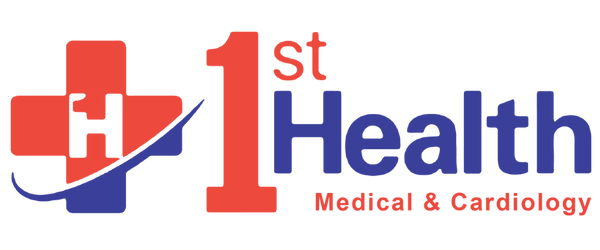Stroke Rehabilitation: Reclaiming Your Life After a Stroke

Stroke Rehabilitation
A stroke is a sudden interruption of blood flow to the brain, causing brain cells to die. The effects of a stroke vary greatly depending on the location and severity of the damage. However, stroke rehabilitation offers immense potential for recovery and regaining independence. This guide will equip you with a comprehensive understanding of this process, its goals, types, and the remarkable potential for improvement it offers.
The Immediate Aftermath of Stroke
After a stroke, the brain has the remarkable ability to heal and reorganize itself. This process, called neuroplasticity, allows undamaged areas of the brain to take over functions previously handled by the damaged areas. Stroke rehabilitation capitalizes on this neuroplasticity by providing targeted interventions to stimulate recovery and relearn lost skills.
Goals of Stroke Rehabilitation
The primary goal of stroke rehabilitation is to maximize a patient’s functional independence. This encompasses various aspects of daily life, including:
- Mobility: Regaining the ability to walk, stand, and transfer safely.
- Activities of Daily Living (ADLs): Relearning basic skills like dressing, bathing, and toileting.
- Communication: Restoring the ability to speak, understand language, and swallow.
- Cognitive Function: Improving memory, thinking, and problem-solving skills.
- Emotional Well-being: Addressing depression, anxiety, and other emotional challenges that can arise after a stroke.
The specific goals of stroke rehabilitation will be individualized based on the patient’s unique needs and the areas of the brain affected by the stroke.
Types of Stroke Rehabilitation
Stroke rehabilitation is a collaborative effort involving a team of healthcare professionals working together to optimize your recovery. The core team typically includes:
- Physical Therapist: Specializes in improving movement, balance, coordination, and strength.
- Occupational Therapist: Focuses on helping you regain independence in daily activities like dressing, bathing, and self-care.
- Speech-Language Pathologist: Works on restoring communication skills, including speaking, understanding language, and swallowing.
- Rehabilitation Nurse: Provides education, support, and assists with daily living activities during rehabilitation.
- Physiatrist (Rehabilitation Physician): A doctor who specializes in physical medicine and rehabilitation and oversees the overall rehabilitation program.
In addition to these core disciplines, other specialists like psychologists, social workers, and dietitians may be involved depending on your specific needs.
There are several settings where stroke rehabilitation can take place:
- Inpatient Rehabilitation: This is an intensive program typically provided in a hospital setting soon after the stroke. It involves several hours of therapy daily, focusing on regaining basic skills and improving overall function.
- Outpatient Rehabilitation: Once you’ve made significant progress in inpatient care, you may transition to outpatient rehabilitation. This typically involves therapy sessions several times a week, often at a rehabilitation center or clinic.
- Home-Based Rehabilitation: For some patients, home-based rehabilitation may be an option. A therapist visits your home to provide therapy sessions and guidance on adapting your living environment for safety and independence.
The duration of stroke rehabilitation varies depending on the severity of the stroke and the individual’s progress. It can range from weeks to months, or even years, with ongoing maintenance programs to sustain progress.
The Road to Recovery: What to Expect During Stroke Rehabilitation
Stroke rehabilitation is a demanding but rewarding process. Here’s what you can expect:
- Comprehensive Evaluation: Your rehabilitation team will conduct a thorough evaluation to assess your strengths, weaknesses, and functional limitations. This helps tailor the rehabilitation program to your specific needs.
- Individualized Treatment Plan: Based on the evaluation, a personalized treatment plan will be developed, outlining specific goals and the types of therapy you will receive.
- Active Participation: Stroke rehabilitation requires active participation from you. Consistency in attending therapy sessions and practicing exercises at home is crucial for maximizing progress.
- Challenges and Setbacks: The road to recovery may not always be smooth. You may encounter challenges and setbacks. However, your rehabilitation team will be there to support you and adjust your program as needed.
The Power of Support
The support system you have around you plays a vital role in stroke rehabilitation. Here’s how your loved ones can help:
- Emotional Support: Provide encouragement, listen to your concerns, and celebrate your achievements.
- Practical Assistance: Help you with daily activities, transportation to therapy appointments, and household chores.
- Advocacy: Be your voice and advocate for your needs when needed.
Living a Fulfilling Life After Stroke
Stroke rehabilitation is a journey of reclaiming your life and rediscovering your potential. With dedication, perseverance, and the support of your rehabilitation team and loved ones, you can achieve remarkable progress and live a fulfilling life.
Don’t wait, connect with us at 1st Health Medical & Cardiology now. Talk to one of our friendly staff members to schedule an appointment to get you or your loved one’s stroke rehabilitation process going. By working together, we can unlock the power of genetic testing and create a personalized plan for a healthier future.
Schedule an appointment today.
